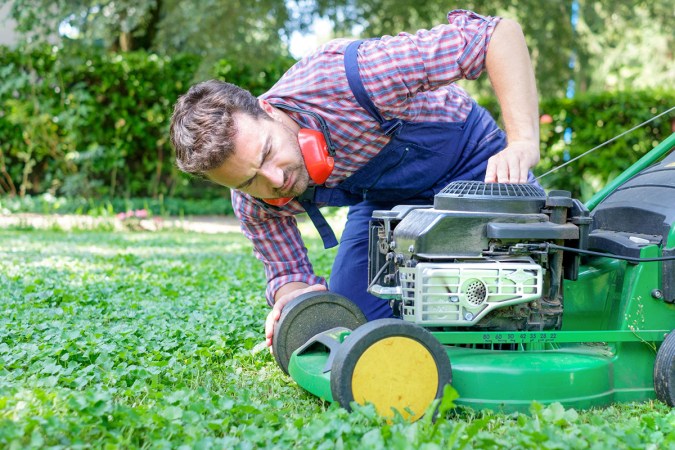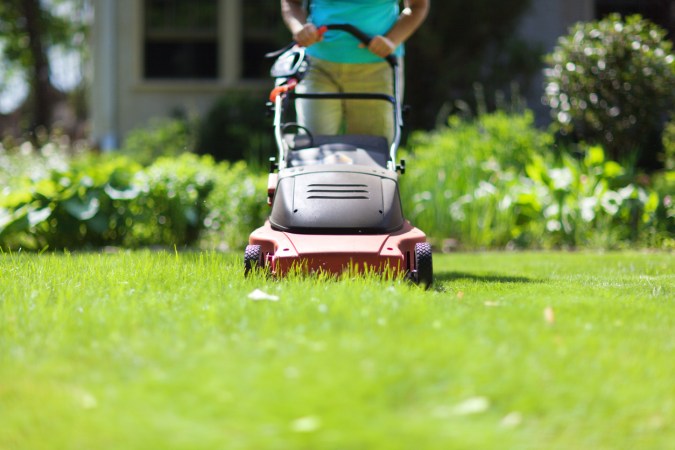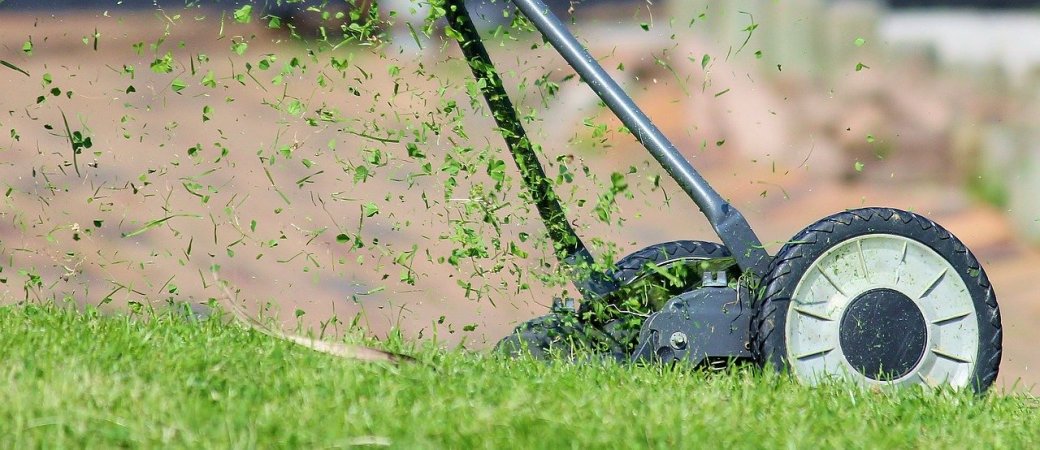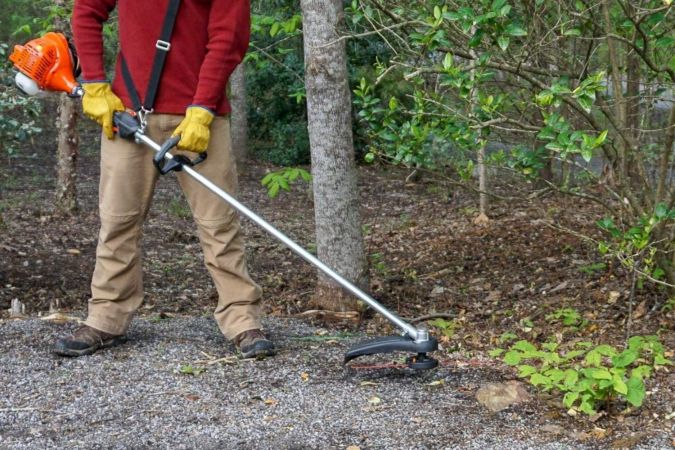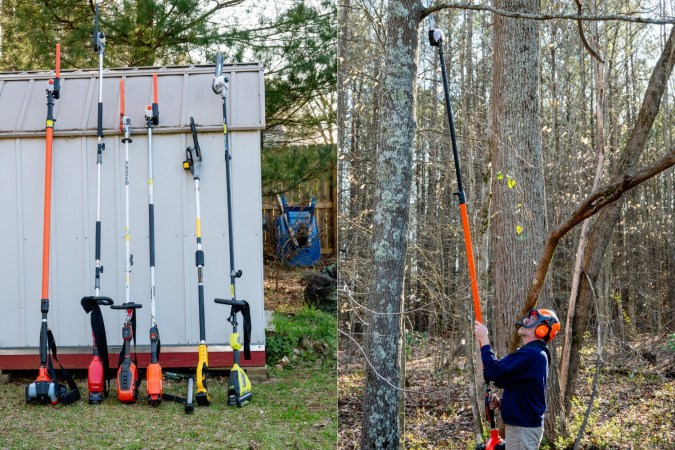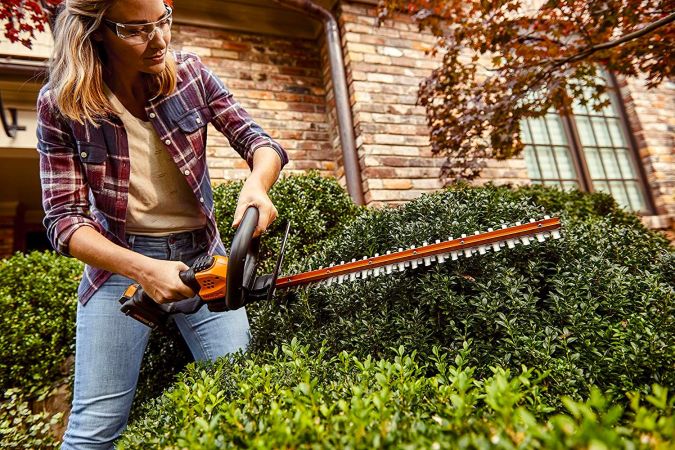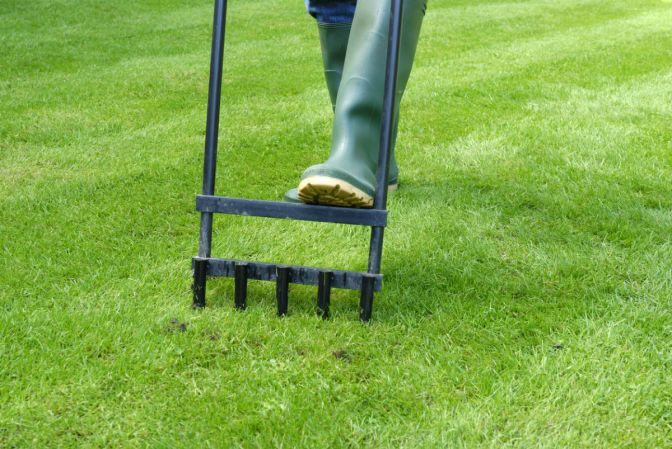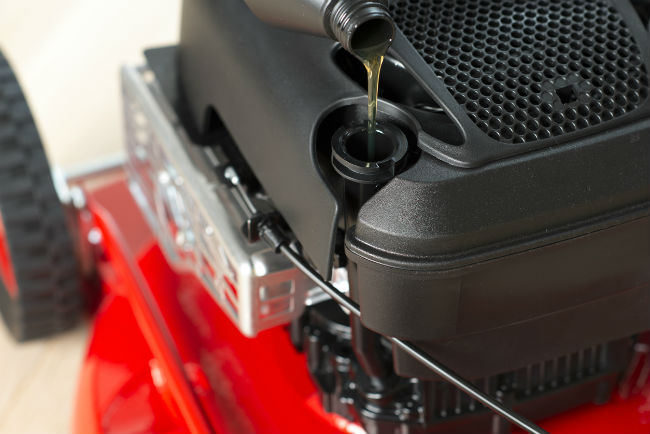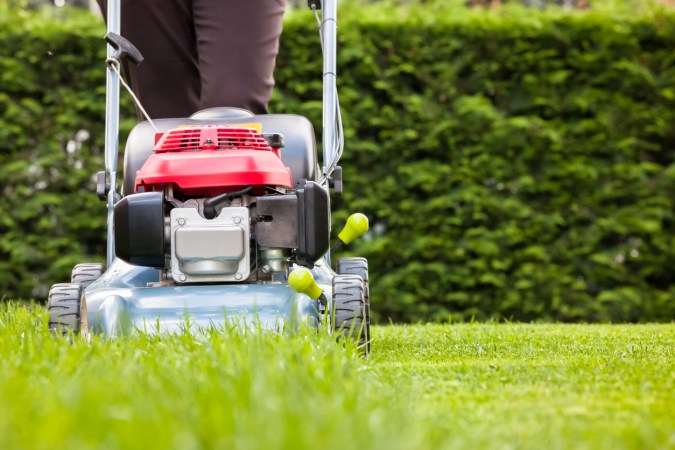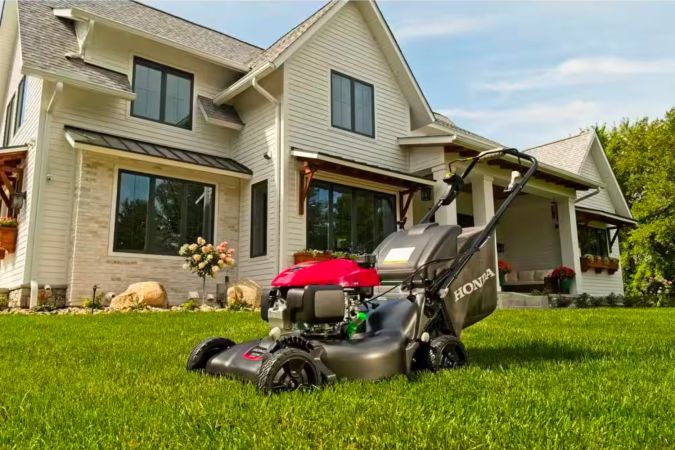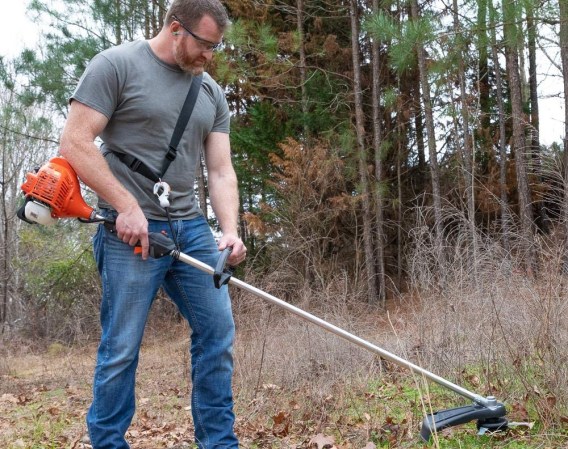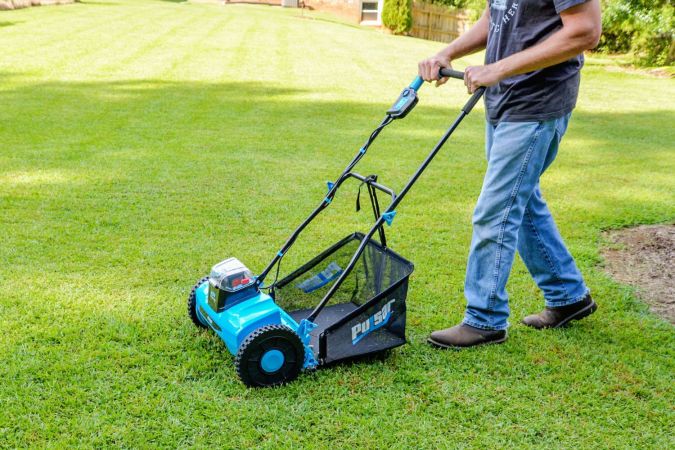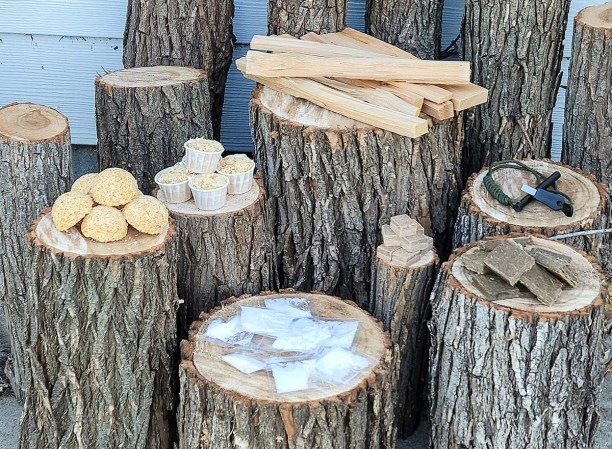We may earn revenue from the products available on this page and participate in affiliate programs. Learn More ›
Turfgrass must be cut regularly in order to ensure that it grows healthy and doesn’t become overgrown. Although you can’t really avoid mowing most lawns, a lawn mower that is well maintained can make the task faster and less onerous.
While some lawn mower problems are better dealt with by professionals, basic lawn mower repair and maintenance isn’t complicated. Most issues can be resolved with minor inspections and repairs. Here’s our best advice about how to take care of your lawn mower, and keep it running smoothly for years to come.
Lawn Mower Maintenance Checklist
You should perform a lawn mower tune-up at least once a year. If you have a very big yard or use the mower frequently, aim to perform routine lawn mower service after every 80 to 100 hours of use. You can do annual lawn mower upkeep before the first cut of spring, or before stowing your mower for winter.
1. Change the oil.
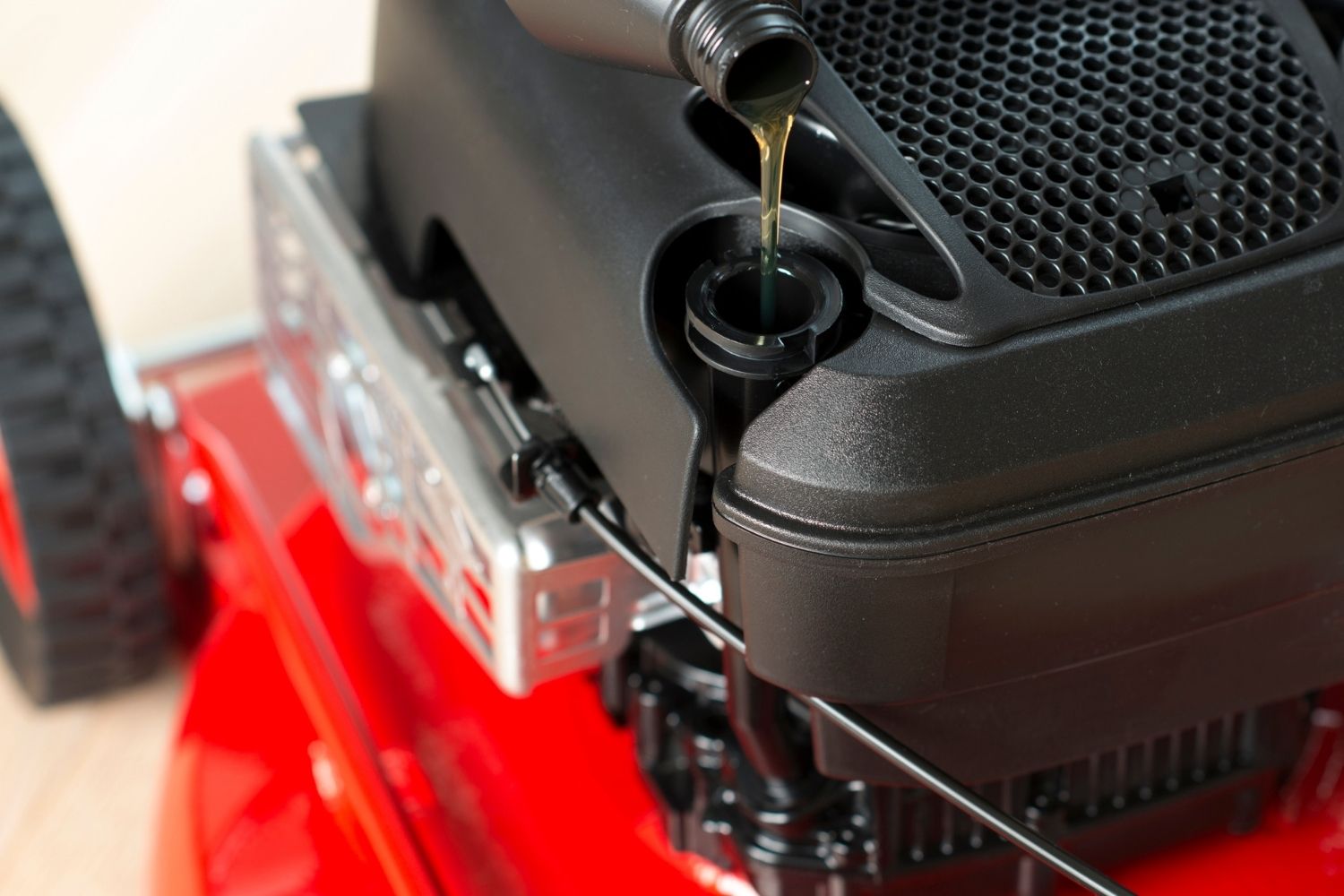
It’s important to replenish and occasionally change the oil in your mower. Without this lubrication for the moving parts of the mower, the engine begins to seize and can break down prematurely. Many people think of oil as the lifeblood of the engine.
Check the oil level with the lawn mower dipstick before each use and replenish as needed. Change the oil when it becomes murky. To change the oil:
- Run the mower until the engine is warm.
- Shut off the mower.
- Remove the spark plug.
- Clean around the oil reservoir cap and remove the cap.
- Tilt the mower on its side and drain the oil into a pan.
- Refill the oil reservoir.
- Replace the cap.
While many lawn mower maintenance tasks can be done annually, you might find you need to change the oil more frequently, about once every 25 hours of use or at least twice per mowing season.
2. Choose the right fuel (and stabilize it).
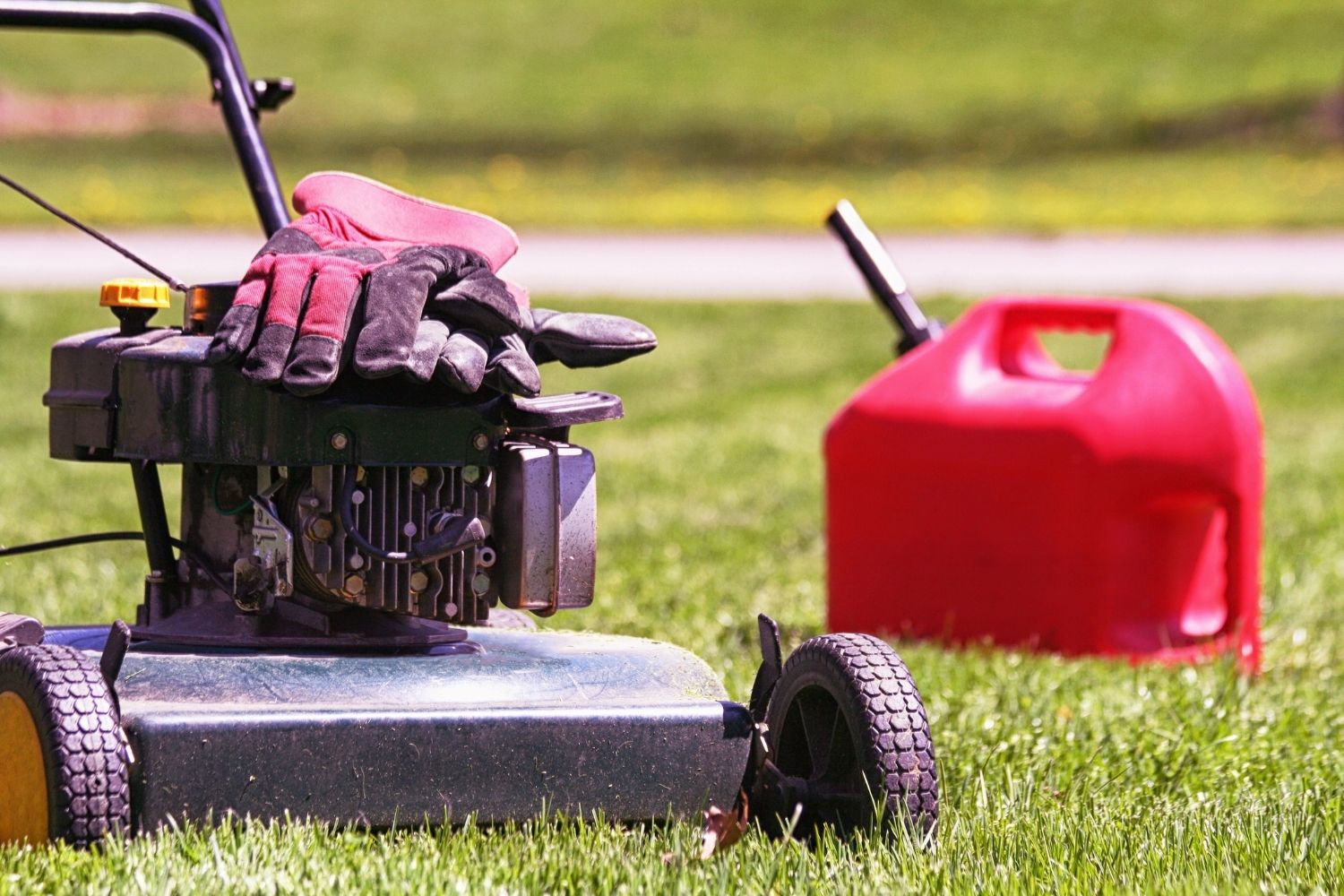
As with any gas-powered machine, the type of gas that is used can impact the performance of the mower and the longevity of the engine. Gasoline is graded according to its octane rating. The higher the rating, the more stable the fuel.
For lawn mowers, use unleaded gas with an octane rating of at least 87. Also keep an eye on ethanol content. Most of the gas sold in the U.S. is E10, which means that it is blended with 10 percent ethanol. That’s fine for lawn mowers, but avoid gas with a higher ethanol content, which can damage smaller engines.
Finally, gas degrades surprisingly quickly. Depending on weather and storage conditions, the gas in your lawn mower can start to lose its volatility in as few as 30 days. That’s where fuel stabilizers come in. These additives bond with gasoline and prevent evaporation and the formation of sticky resins that can ruin a carburetor. “Fuel stabilizers protect engines from the effects of gas deterioration,” says Shawn Carothers, senior marketing manager at Toro. “It’s best practice to add the fuel stabilizer every time you fill up.”
3. Clean or replace the air filter.
The air filter in the lawn mower protects the engine by trapping dust, dirt, and other debris, but the filter can hold only so much before it becomes dirty and clogged, losing effectiveness. Some lawn mowers have reusable air filters that can be removed and washed, but this is a rare feature. Generally, a lawn mower filter should be replaced about once every year to help maintain a healthy engine.
Symptoms of a dirty or clogged air filter include:
- Dirty physical appearance
- Misfiring engine
- Reduction in the horsepower or power output of the engine
- Concerning engine noises
- Strong fuel smells
- Flames or black smoke coming from the engine
If you notice any of these signs, stop mowing and go purchase a replacement air filter. They are inexpensive and relatively easy to replace if you follow the lawn mower manufacturer’s instructions.
4. Sharpen mower blades.

Lawn mower blades should be regularly inspected for warping, rusting, and other damage, and they need to be sharpened once or twice per season to help extend the life of the blades and the mower.
Sharp blades don’t just help the mower cut the grass better, they also make cleaner cuts through the grass, which reduces the likelihood of the lawn developing a disease. Inspect the mower blade for dents or nicks, and also take note if the grass height is uneven after cutting, the edges of the grass look brown, or if the grass blades are torn instead of sliced clean through—all signs of a dull blade. Here’s how to get that blade sharp again:
- Remove the spark plug.
- Tip the mower on its side, with the carburetor side facing up.
- Use paint or a marker to mark the side of the blade that’s facing out
- Remove the blade. You may need to use a lubricant to loosen the nut.
- Place the blade in a clamp and clean it with a wire brush and rag.
- Put on eye protection and gloves.
- Hold a flat file at the exact angle of the bevel and stroke up and down repeatedly while moving from one end of the bevel to the other.
- Reinstall the blade with the marked side facing out.
5. Replace spark plugs at least annually.
Just as in a car or truck, the spark plug in a lawn mower serves as an ignition source for the gasoline. Signs that a lawn mower’s spark plug may be failing include hard starts, poor engine performance, unreasonable fuel consumption, and a worn, cracked, or chipped physical appearance of the spark plug. If the engine is difficult to start up or tends to die out immediately after starting, then the issue may be the spark plug.
“We recommend homeowners change the spark plug in their mower at least at the start of each mowing season or every 25 hours of use,” says Carothers, who suggests checking your mower’s operating manual for specifics. “Heavy usage may require more frequent changes,” he adds.
6. Clean your mower.
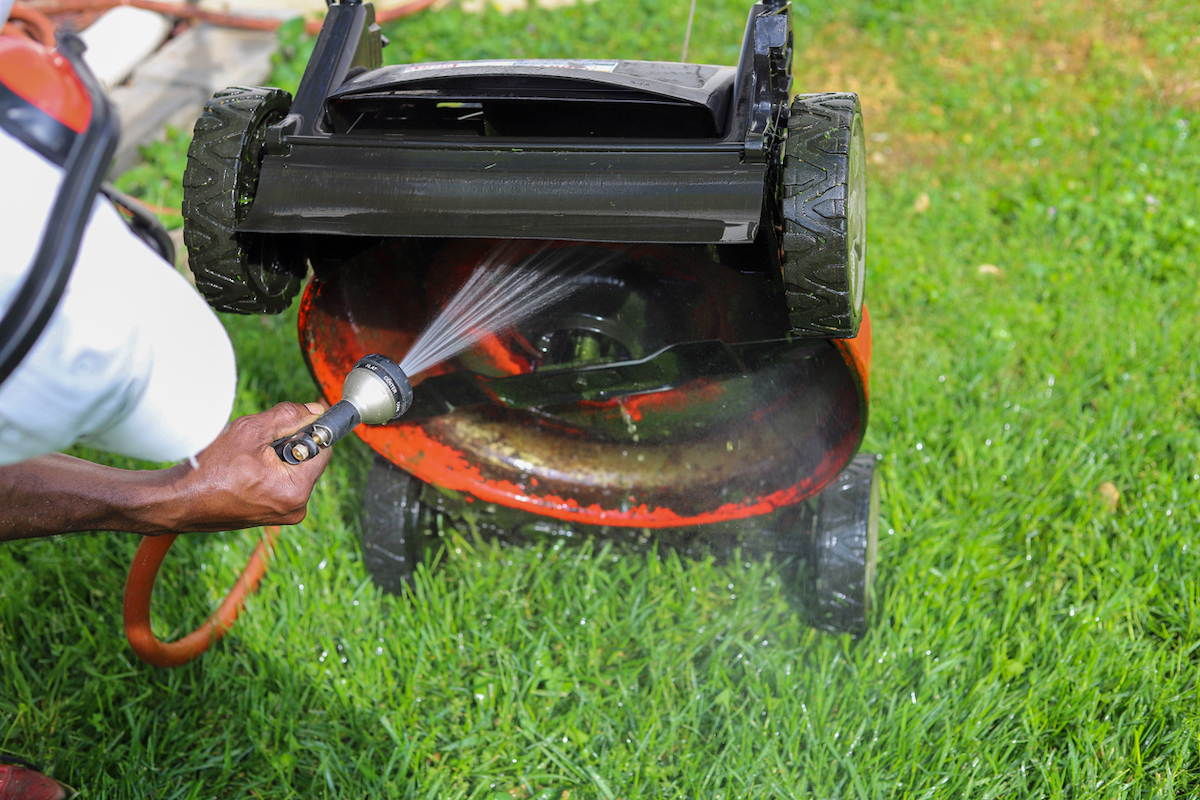
Clean your lawn mower after each use. Keeping the deck clean will reduce the chance that the lawn mower will begin to rust or corrode from the inside. Also, as the deck of the lawn mower slowly fills with grass clippings, weeds, and dirt, the accumulation creates a barrier that prevents the grass from standing up straight underneath the mower, resulting in a poorly cut lawn. This buildup can even hinder the rotation of the blades, putting stress on the engine, blades, and other components of the mower.
- Using a clean rag, do a quick wipe-down of the top of the mower deck after each use.
- Tilt the mower on its side and check the underside of the mower after every use to clean out any stuck-on grass, dirt, weeds, or other debris.
7. Inspect the flywheel.
A flywheel is a part within the engine of the lawn mower that stores the momentum from the combustion process to keep the crankshaft turning between the power strokes of the engine. It also helps cool the engine by blowing air around the engine block. Without a functional flywheel, the engine could quickly become overheated or it might not even start. “If your mower is refusing to start, or throws spark into the combustion chamber at the wrong time, it could be because of a misaligned flywheel,” says Carothers.
Some signs that a flywheel is damaged or failing include an engine that won’t start, an engine that constantly stalls, and a burning odor from the engine. Inspect the flywheel at the beginning and end of every lawn maintenance season to check for cracks, broken fins, slight burrs, shearing, and crankshaft damage. Just make sure to disconnect the spark plug lead before opening the engine to check the flywheel.
How to Prepare Your Mower for the Winter

“You definitely want to prepare your lawn mower for winter storage,” says Jeremy Yamaguchi, CEO of Lawn Love, a service that helps consumers find local lawn care. “Cold temperatures and months of no use can impact the lifespan of your mower if you don’t properly take care of it.”
Carothers concurs, and says a thorough cleanup is the first step in winterization. “Damp grass clippings, leaf mulch, or mud can cause rust or a freeze-and-thaw cycle, potentially weakening the metal,” she says. “Even though clumps of material will dry eventually, it will be much harder to clean off” down the road. Carothers recommends that homeowners take these cleaning steps:
- Spray the deck.
- Remove and clean the blades.
- Scrape off grass clumps and organic matter that doesn’t loosen with water.
- Wipe the mower down to ensure it is dry.
Carothers also suggests filling the gas tank before storing the mower. “A full tank will help prevent condensation, and the fuel stabilizer will prevent fuel spoilage,” she says. “Run your mower for a few minutes to distribute the fuel stabilizer evenly.”
Before you store the mower, she says, check the tires. “Inflate them to their proper pressure to prevent damage to the tires, as they can lose pressure over the winter,” he says. “You should also protect your mower tires from cold concrete by parking the mower on cardboard or other insulating material.”
Yamaguchi adds, “I always just winterize my mower right after the last time I use it before the winter so that I get the task out of the way and don’t forget about it.”
When to Buy a New Lawn Mower
“It may be time for a new mower if your current one requires frequent repairs,” according to Carothers. Other signs that your mower may have reached the end of its life include excessive vibration, power loss, or cut degradation, he adds.
Each situation is different, but in general, it might be time to consider getting a new mower if any of these conditions apply:
- Your mower is more than 10 years old.
- Your mower has been used for more than 450 hours.
- You’re spending more time fixing the mower than mowing the grass.
- The engine is completely shot and needs to be replaced.
- The transmission needs to be replaced.
- Your mowing needs have changed—you now have a bigger or smaller yard, for example.
“If your lawn mower is difficult to start and requires too many pulls to get it going, it’s probably time to replace your lawn mower,” says Dan Bailey, president of WikiLawn Austin Lawn Care. “Lawn mowers are typically good for 7 to 10 years, so when your mower is approaching that age, start window-shopping for an upgrade.”


